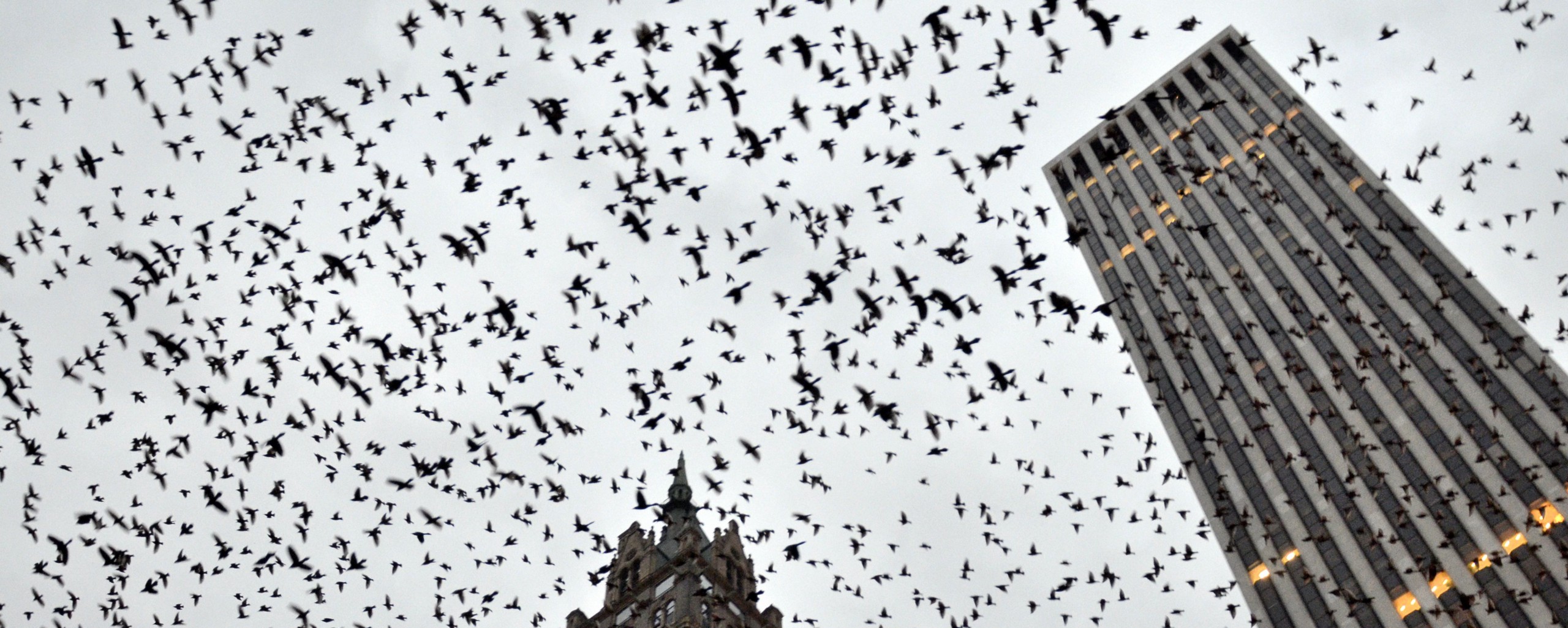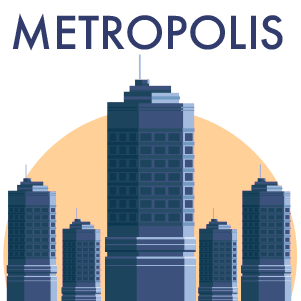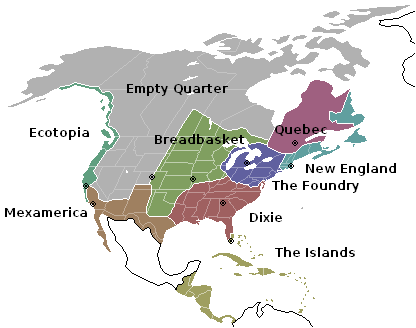

Each time we move to a new city, we make memories as the city slowly takes shape in our minds. Every new place we locate–the closest grocery store, the post office, rendezvous points with friends–is a new point on the map. Wayfinding a new city is an experience you can never get back. Once you’re familiar with the space or place, it’s gone.
Since moving out on my own, I’ve gravitated toward cities: Seattle, Portland, San Francisco, San Diego, Austin, Atlanta, Chicago. Externalized memories built in brick and concrete. It makes me think of a passage from Steve Erickson’s novel Days Between Stations:
“What is the importance of placing a memory? he said. Why spend that much time trying to find the exact geographic and temporal latitudes and longitudes of the things we remember, when what’s urgent about a memory is its essence?”
Our cities, those densely populated spaces of our built environment, have always been slowly redefining themselves. In 1981, there were the nine nations of North America. In 1991, the Edge Cities emerged. In 2001, we witnessed the worst intentions of a tightly networked community that lacked physical borders–what Richard Norton calls a “feral city,” a community that’s beyond the reach of law and order.
Our capital-driven, networked societies produce, more than anything else, ephemeral things–that is, things that are built, not to last, but to disappear and be displaced by newer versions of themselves. As David Byrne wrote in his Bicycle Diaries, cities “are physical manifestations of our deepest beliefs and our often unconscious thoughts, not so much as individuals, but as the social animals we are.” If our collective consciousness is flitting and flickering from one thing to the next, so shall our cities follow suit.
From flash mobs to terrorist cells, communities can now quickly toggle between virtual and physical organization. How long before our cities do the same?

“In the sagas it was said that humans dream with their hands, only their hands, and so have cities rather than sagas, monuments rather than memories.”
–Ted Mooney, Easy Travel to Other Planets

According to Joel Garreau, an “edge city” is one that is “perceived by the population as one place.” Like in tight-knit neighborhoods, its residents staunchly identify with and defend it, resisting outside influence. Conversely, rapid transit has increased the exchange of ideas between once-isolated places, spurring innovation. The French philosopher Gilles Deleuze called these areas “any-space-whatever,” the space in his view only important for the connections it facilitates. Critiquing the much-lauded coming of the “smart city,” Adam Greenfeld wrote that “the important linkages aren’t physical but those made between ideas, technical systems, and practices.” After all, the first condition for a smart city is a world-class broadband infrastructure.
Connection is key–the connection could be the city.

“We’ve created 10,000 places that are not worth caring about. Imagine the corrosive effect of that on our national psychology. How soon before we become a land not worth defending?”
–James Howard Kunstler, in conversation with the author

It’s been argued that we are at work, rather unwittingly, building an “Ephemicropolis,” a sprawling urbanity without roots or reason. In his recent book Out of the Mountains, David Kilcullen defines four global factors that will determine the future of Ephemicropolis: population growth, urbanization, littoralization (the human tendency to cluster along shorelines), and connectedness. As more and more people meet and fall in love and populate the planet, they are doing so in bigger cities, near the water, and with more connectivity than ever.
Basically, the future of human hives is crowded, coastal, connected, and complex.

As soon as the coasts recede with the rising ocean tides, those hives will have to move inland. More importantly, they will have to disassemble, move, and reassemble in some fashion. Urban planner Kevin Lynch once called cities “systems of access that pass through mosaics of territory.” That description is fitting for what I call “swarm cities,” a tenuous but slightly more stable form of what Eric Kluitenberg refers to as “swarm publics”: “Today, we are witnessing the rise of swarm publics, highly unstable constellations of temporary alliances that resemble a public sphere in constant flux; globally mediated flash mobs that never meet, fueled by sentiment and affect, escaping fixed capture.”

“The city, as a form of the body politic, responds to new pressures and irritations by resourceful new extensions always in the effort to exert staying power, constancy, equilibrium, and homeostasis.”
–Marshall McLuhan, Understanding Media

Swarm cities are only as physical as they need to be. And, as connected as they are, they’re also only as cohesive as their sustainment demands. The networked freedom to live and work anywhere doesn’t always make location irrelevant, however; it often makes it that much more important. Kevin Lynch wrote, “Our senses are local, while our experience is regional.” Meanwhile, Robert J. Sampson argues for behavior based on our idea of local roots. The neighborhood effect is how we describe the interaction between individuals and their main network, and between the local and the global.
The neighborhood is where boundaries matter. It’s where human perception binds us within borders, where nodes are landmarks in a physical network, not connections in the cloud. As Italo Calvino wrote in his novel Invisible Cities: “The city, however, does not tell its past, but contains it like the lines of a hand, written in the corners of the streets, the gratings of the windows, the banisters of the steps, the antennae of the lightning rods, the poles of the flags, every segment marked in turn with scratches, indentations, scrolls.”
Like the landmarks and memories of neighborhoods, swarm cities are duplicitous, existing both inside and outside our heads.

“Memory is redundant: It repeats signs so that the city can begin to exist.”
–Kathy Acker

Early on in his book In Divisible Cities, Dominic Pettman repurposes the idea of “mattering maps,” those maps we make to and from the things that matter:
“A map that generates territory, rather than the other way around “¦ A map that does not represent cities that exist independently, but a map that brings cities into being.“
Cities used to spring up near water. Rivers crisscrossing through dirt provided the networks. Railroads and highways developed next, with the metropolis growing between their branches. Cities emerge where connectivity gets concentrated. Just as the telegraph separated communication from transportation, the current dominant forms of connectivity are not grounded in physical space. The cities of the future will emerge with cultural scripts as blueprints, with landmarks like 9/11, Columbine, and Katrina. Their unity condensed from vapor, all clouds and leaves with no roots. Think Home Depot instead of home. The strip mall as town hall. Disposable digs.
Local communities haven’t been diminished by global networks, they have come unmoored because their connectedness isn’t physically grounded. There remains no absolute value to the region you happen to occupy. The nodes shift as needed. This is the cartography of the future: giant, sprawling mattering maps made of memories. Within them are vast and multiple new swarm cities to explore.

Further Reading
This piece was originally spread across a few posts on my website, roychristopher.com. It was informed by the works below:
- Kathy Acker and McKenzie Wark, I’m Very Into You (Cambridge: Semiotext(e), 2015).
- Darran Anderson, Imaginary Cities (London: Influx Press, 2015).
- David Byrne, Bicycle Diaries (New York: Viking, 2009).
- Italo Calvino, Invisible Cities (Orlando: Harcourt, 1974).
- Roy Christopher, “Interview with James Howard Kunstler,” roychristopher.com, February 6, 2002.
- Brian Eno, A Year with Swollen Appendices (London: faber & faber, 1996).
- Steve Erickson, Days Between Stations (New York: Owl Books, 1985).
- Richard Florida, The Great Reset (New York: Harper, 2010).
- Joel Garreau, The Nine Nations of North America (New York: Houghton Mifflin, 1981).
- Joel Garreau, Edge City: Life on the New Frontier (New York: Doubleday, 1991).
- Anthony Giddens, The Constitution of Society (Cambridge, MA: Polity Press, 1984).
- Cliff Goddard and Anna Wierzbicka, “Cultural Scripts: What Are They and What Are They Good For?” Intercultural Pragmatics 1(2)(2004): 153″”166.
- Adam Greenfield, Against the Smart City (New York: Do Projects, 2013).
- David Kilcullen, Out of the Mountains: The Coming Age of the Urban Guerrilla (New York: Oxford University Press, 2013).
- Eric Kluitenberg, Delusive Spaces: Essays on Culture, Media and Technology (New York: NAi/DAP. Inc, 2008).
- Kevin Lynch, Managing the Sense of a Region (Cambridge, MA: The MIT Press, 1976).
- Cat Matson, “The Problem With Smart Cities,” How We Get To Next, March 27, 2016.
- Shannon Mattern, Deep Mapping the Media City (Minneapolis: University of Minnesota Press, 2015).
- Marshall McLuhan, Understanding Media: The Extensions of Man (New York: Houghton-Mifflin, 1964).
- Ted Mooney, Easy Travel to Other Planets (New York: Ballantine, 1981).
- Nicholas Negroponte, Being Digital (New York: Knopf, 1995).
- Dominic Pettman, In Divisible Cities (Brooklyn: Punctum Books, 2013).
- Peter Root, Ephemicropolis art exhibit, 2010.
- Robert J. Sampson, Great American City: Chicago and the Enduring Neighborhood Effect (Chicago: University of Chicago Press, 2013).
- Anthony M. Townsend, Smart Cities: Big Data, Civic Hackers, and the Quest for a New Utopia (New York: W.W. Norton & Co, 2013).


How We Get To Next was a magazine that explored the future of science, technology, and culture from 2014 to 2019. This article is part of our Metropolis section, on the way cities influence new ideas–and how new ideas change city life. Click the logo to read more.

